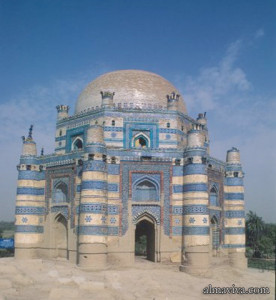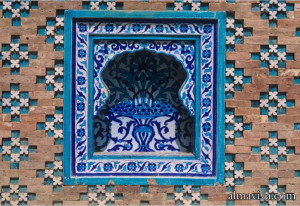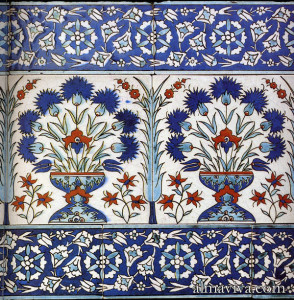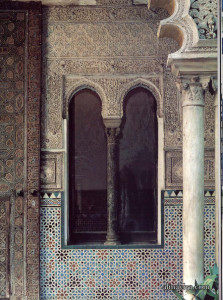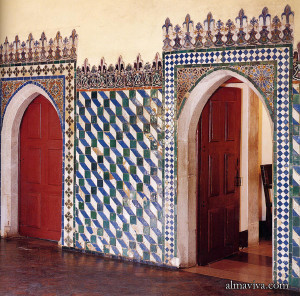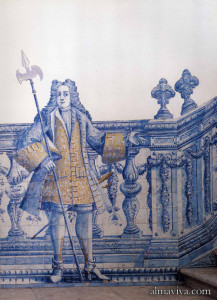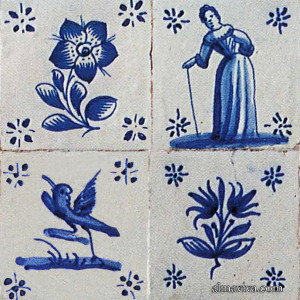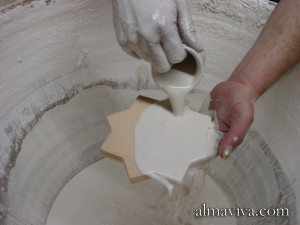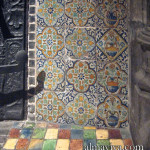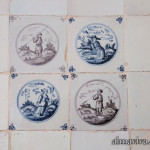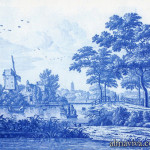Kashi gari is a term used in the East Indies to refer to the work of ceramics.
The kashi tiles work is characterized by the use of branches and flowers, with rich colours of blue (dark blue and turquoise). The history of this region is punctuated by successive waves of invaders; the decor and colours are an evidence of Persian influence, which itself was influenced by the Mongols. This is why it is often said that the word comes from the name of the city of Kashgar (now Chinese Turkestan). All the mosques and shrines in this area are decorated in this refined and distinctive style, especially in Sindh and Multan. To mention only a few outstanding examples: the shrines of Shah Youssef Gardezi, of Shah Ruknee Alam, of Sultan Ali Akbar, of Shah Abdul Latif Bhittai, or the Elga mosque in Lahore.





